People
How Artist Fred Eversley Went From Consulting for NASA to Creating Otherworldly Sculptures
The artist, who recently located to New York full time, is the subject of a solo presentation at Frieze New York this week.
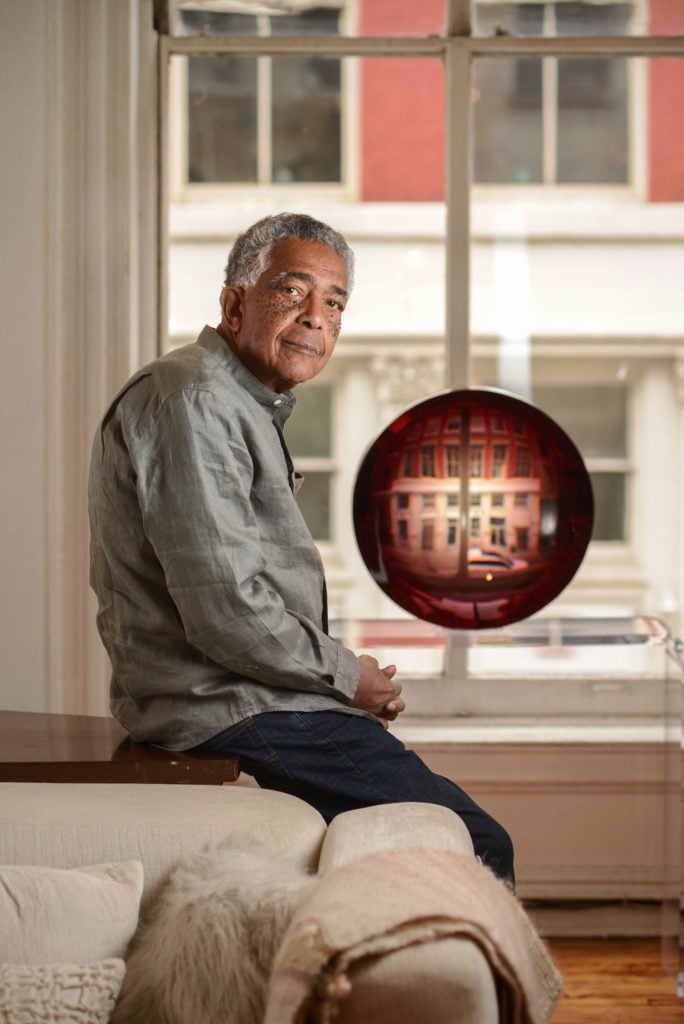
The artist, who recently located to New York full time, is the subject of a solo presentation at Frieze New York this week.

Matt Stromberg

For 50 years, Fred Eversley’s studio in Venice, California served as a perfect encapsulation of his scientific approach to art. “It was an incredible hybrid of a science lab and an artist’s studio,” says Andrew Perchuk, deputy director of the Getty Research Institute. The studio, he adds, “was like an archaeology of Light and Space”—the West Coast brand of atmospheric minimalism pioneered by artists like Larry Bell, Robert Irwin, John McCracken, and, as the art world is increasingly coming to recognize, Eversley.
“You learned how he pioneered these different processes, because the kind of perceptual things he was looking for required an insane degree of precision,” Perchuk says. “It had a series of centrifuges, molds, casting equipment, flames—really magical.”
That magic came to an end earlier this year after Eversley’s landlord refused to renew his lease, prompting him to relocate to New York full-time, where he has maintained a studio in SoHo for 43 years. Since his eviction, the Venice studio has received designation as a Historic-Cultural Monument, a bittersweet recognition of its significant creative legacy.
Despite this disruption, Eversley is having a pretty good year. The 77-year old Light and Space artist (though he bristles at that label) had a virtually sold-out solo show of new work at David Kordansky Gallery in Los Angeles, Chromospheres, and was included in two very different group shows: Soul of a Nation: Art in the Age of Black Power 1963-1983, now on view at the Broad in LA, and Space Shifters, a survey of minimalism and works that explore perception and optics, at London’s Hayward Gallery.
![Fred Eversley, Untitled (1969) [detail]. Photo: Jeff McLane. Courtesy of David Kordansky Gallery, Los Angeles.](https://news.artnet.com/app/news-upload/2019/04/FEV-19-013i-1024x683.jpg)
Fred Eversley, Untitled (1969) [detail]. Photo: Jeff McLane. Courtesy of David Kordansky Gallery, Los Angeles.
But were it not for a fortuitous accident, Eversley may never have become an artist at all.
Eversley’s journey to art began in an unlikely place: engineering school. Born and raised in Brooklyn (his New York accent is a giveaway), he studied electrical engineering at the Carnegie Institute of Technology (now Carnegie Mellon) in Pittsburgh before moving to LA in 1963 to work for Wyle Laboratories, where he built acoustical testing facilities for NASA.
Settling in Venice—one of the only neighborhoods that would rent to African Americans at the time—he was surrounded by artists even before he became one himself. In his spare time, he would help his artist neighbors, including Judy Chicago, solve their peskiest engineering problems.
Then, in 1967, disaster struck. He suffered a debilitating car accident, which he says almost killed him and put him on crutches for the better part of a year. He used the time off to explore making his own art—and never looked back. But though he did not return to engineering work, his art is infused with many of the themes that came up in his former day job: energy concentration, perception, reflection, and luminosity.
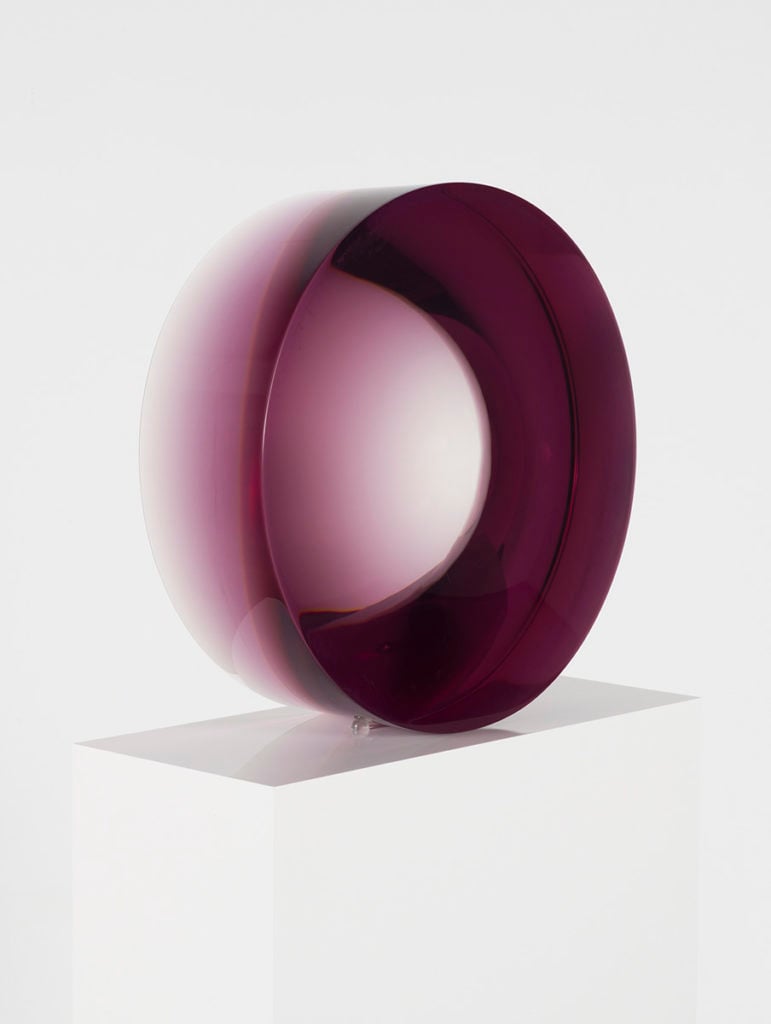
Fred Eversley, Untitled (Rose Mist) (1984). Photo: Jeff McLane. Courtesy of David Kordansky Gallery, Los Angeles.
These same concepts were at the heart of the work of many other West Coast artists, including Peter Alexander and John McCracken, who were using polyester resins to develop a slick, distinctly West Coast-flavored minimalism. Eversley’s earliest works were transparent cylinders cast in concentric layers of violet, amber, and blue, sliced at different angles to produce luminous, sharp-edged shapes.
“His life was running parallel to the art world and suddenly it truly intersects at precisely the moment and the place where artists were also becoming more interested in the questions that he had been interested in as an engineer,” notes the Whitney Museum’s prints and drawings curator Kim Conaty.
Just two years after he committed himself to art full-time, Eversley’s star was rising rapidly. In 1969, he took over a Frank Gehry-designed studio in Venice formerly occupied by painter John Altoon. But fellow artist Robert Rauschenberg told him that if he really wanted to make it as an artist, he’d need gallery representation in New York.
“I said, ‘Where do I even start?’” Eversley recounts. “He shrugged his shoulders and said, ‘I started showing with Betty Parsons, why don’t you go see Betty?’”
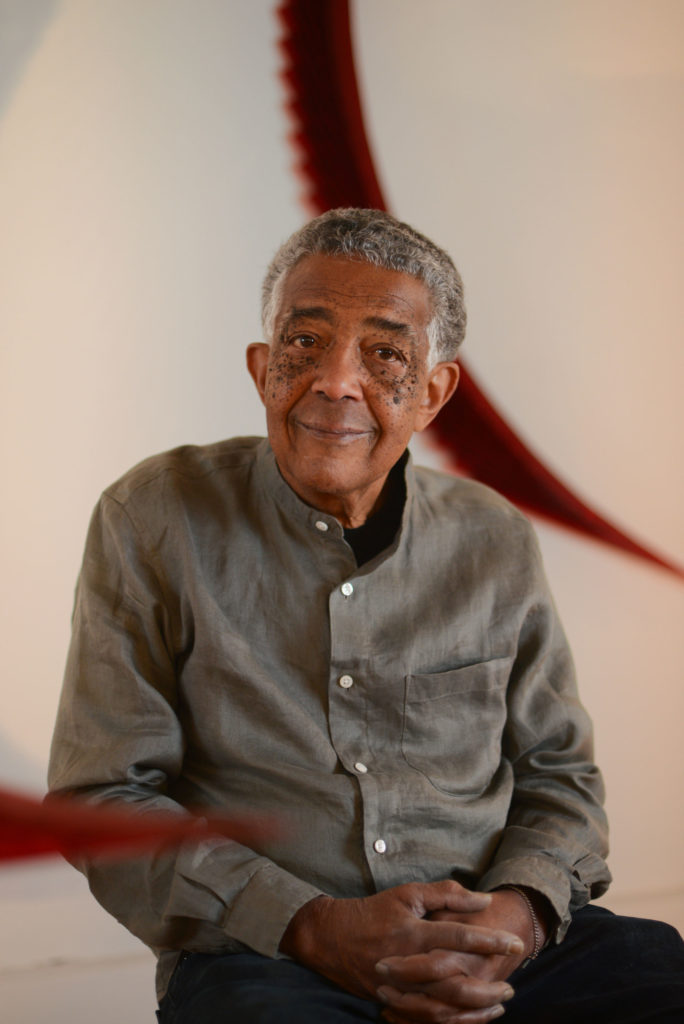
Fred Eversley at home in New York City. Photo © 2019 Taylor Dafoe.
Although she bought a couple pieces for herself, the legendary dealer known as an early champion of Abstract Expressionism wasn’t interested in showing Eversley, nor was the next dealer he approached, Leo Castelli. On that same trip to New York, however, he stopped at the Whitney Museum to see then-curator Marcia Tucker. (“We both hung out in the village in the ’50s,” Eversley explains.)
The stop would prove momentous. “Marcia loved my work and called the whole staff in,” he says. “They offered me a show six months later.”
Without a solo gallery show under his belt, Eversley landed a solo exhibition at the Whitney, which opened in May 1970, followed by shows at the Phyllis Kind Gallery in Chicago and at OK Harris that December. “It was a good year, 1970,” Eversley says.
In the 50 years since this auspicious debut, Eversley has rarely strayed from a single form: the parabola. Ever the engineer, he is fascinated by the fact that this shape can concentrate energy at a single focal point. Even as a teenager, he recalls, “I was messing around in my parents’ basement using a phonograph table and a pie pan to make a parabolic pond of water.”
This is essentially the same process by which he creates his lenses today, using a centrifuge to spin resins as they harden. “I often think of his sculptures along the lines of ceramics: cast on a rotating wheel, intensely hands-on—engineering meets intuition,” says Eversley’s dealer David Kordansky.
The spinning process—which sometimes involves pouring multiple colors of resin at precisely the right moment so they properly blend together—is followed by repeated sanding and polishing to create a pristine surface. Over the years, Eversley has experimented with numerous variations, so this single shape can range from a transparent pastel lens to an opaque, inky black mirror.
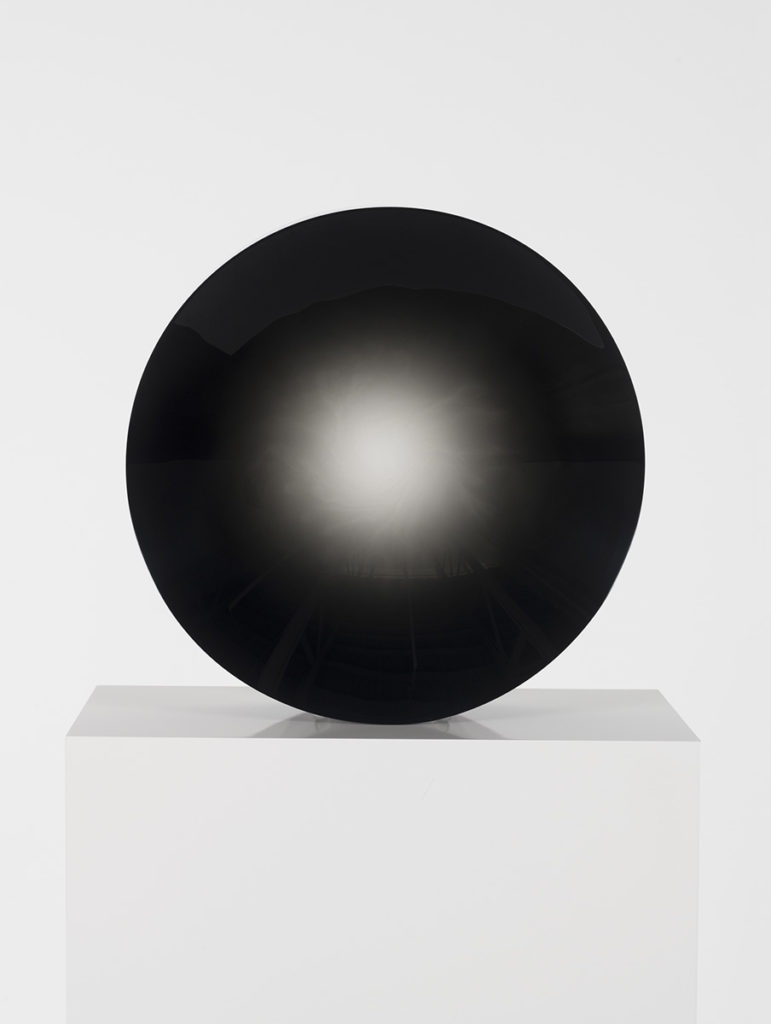
Fred Eversley, Untitled (parabolic lens) (1974). Photo: Jeff McLane. Courtesy of David Kordansky Gallery, Los Angeles.
His lenses entice the viewer to move around them, watching as their perception of the object—and its reflection of the world around them—changes with each step. Eversley considers his works forms of kinetic art, although the spectator, rather than the art object, is the one moving. His goal, he has said, is to focus “the spectator into perceiving the complex nature of reality, both physical and social.”
At Frieze, Kordansky will present a selection of parabolic works ranging from magenta to smoke to midnight blue alongside Eversley’s earliest tricolor, cylindrical works, many of which have never been shown publicly.
Despite his central position in the Light and Space movement, Eversley has not received the same level of recognition afforded some of his peers, such as Robert Irwin and John McCracken. “I have to attribute this, in part, to race and institutionalized blind spots and discrimination,” Kordansky says.
His work also does not fit neatly into art historical categories. Eversley’s focus on energy and physics was often at odds with the formal concerns of his fellow Light and Space contemporaries; at the same time, he was not considered part of the Black Arts Movement, which took a more explicitly political and figurative approach.
Conaty considers Eversley’s work to be more closely aligned with that of African American abstract painters like Sam Gilliam or Jack Whitten, “who seized upon abstraction as a broad language that was accessible for all… so in a way the political gesture is in making space for one’s work within these vocabularies.”
To be sure, Eversley hasn’t been completely overlooked. He has had consistent solo shows every few years, though his labor-intensive process has limited his output. His works are in the collections of more than 40 museums. But he has become much more visible over the past five to 10 years following his prominent inclusion the inaugural Pacific Standard Time initiative in 2012, which made the case for a major reappraisal of West Coast art. New York’s Museum of Modern Art acquired one of his lenses in 2017; LACMA followed suit earlier this year.
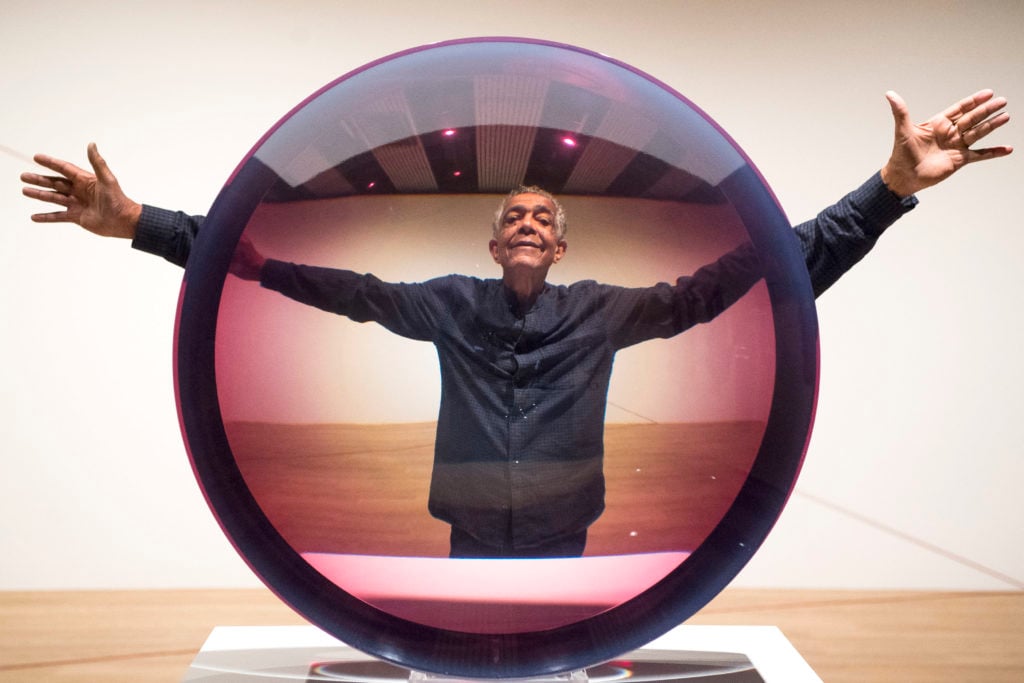
Artist Fred Eversley with Untitled (Parabolic Lens) (1971), photo by Victoria Jones/PA Images via Getty Images.
Then came his 2019 show with Kordansky, who Eversley says he knew nothing about when the dealer initially reached out. But after a studio visit, the artist recalls, “We basically fell in love with each other. He’s done very well by me.” His market is certainly gathering steam: In February, a tricolor polyester ring sold at auction for $281,250, more than five times its $50,000 high estimate. Smaller, monochrome rings sold for $43,750 in 2018 and just $600 in 2004.
It is perhaps surprising that an artist who has dedicated himself to exploring and refining the same form over five decades would still prize novelty. But Eversley can’t contain himself when he hears how crowds gathered around his work at the opening of Soul of a Nation in Los Angeles. One by one, they inched closer to find a sweet spot where the lens collected and amplified the space’s acoustics.
“Since it concentrates sound as well as light, and there’s a distance between your eyes and your ears, people always play a game of trying to get their eyes and ears at this focal point,” Eversley explains. “It’s impossible. So they play this game, going back and forth.” With a current of delight in his voice, he says, “It sucks people in.”